Greatness shouldn’t be rushed, especially when it’s found in the form of a delicious apple.
So it’s definitely a major bummer when a Malus tree’s fruit hits the ground before it’s supposed to. A tragedy, even.
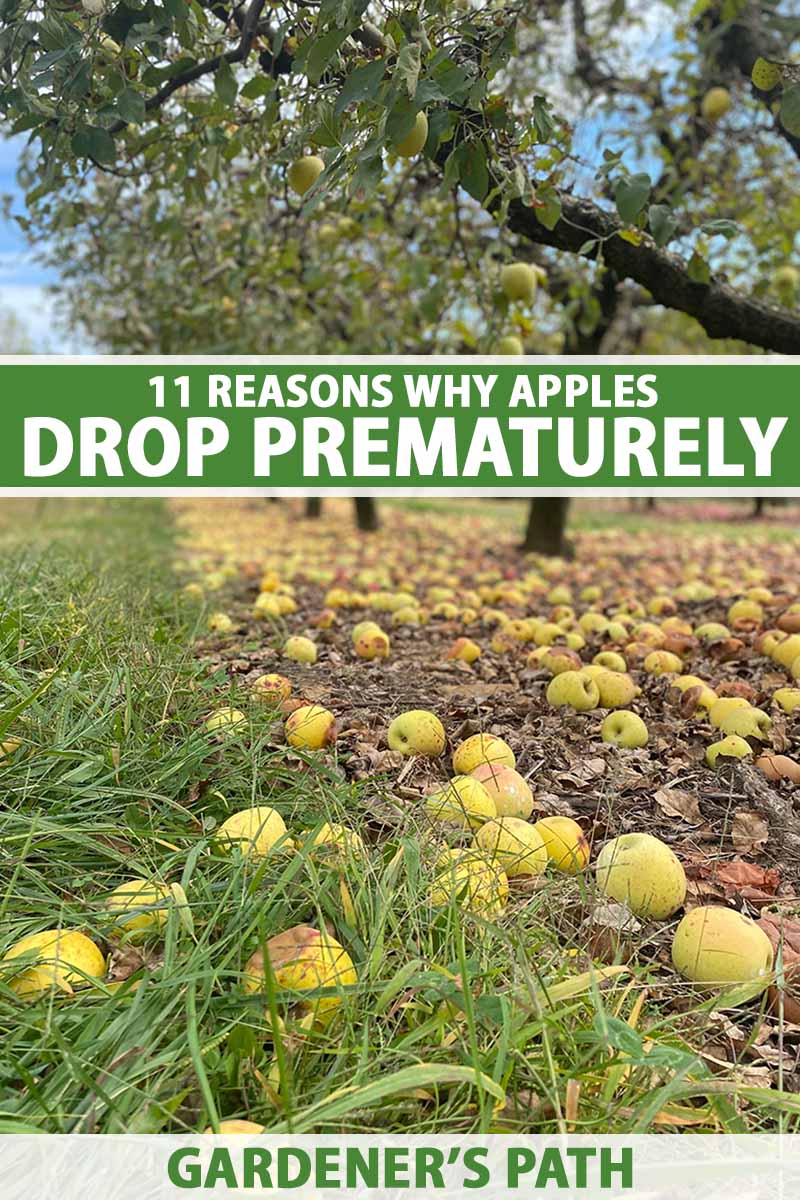
We link to vendors to help you find relevant products. If you buy from one of our links, we may earn a commission.
For those less invested, a shrug and a “C’est la vie” may be all that’s expressed.
But for a grower who has labored and toiled in the hopes of an ample yield, a premature dropping of pomes can feel like a slap to the face.
If their livelihood depends on it, make that a slap from Russian slap-fighting legend Vasily “Dumpling” Kamotsky.
Diagnosing the cause of this problem isn’t always simple. There are many different factors at play, and more than one issue could occur simultaneously. So, how do you figure it out?
I’m obviously a bit biased, but I think this guide is a decent place to start.
Armed with a handful of potential causes, you’ll be able to draw conclusions for yourself – or at least have some theories ready to share with any local expert that you go to for additional help.
Here’s what we’ll be going over:
What You’ll Learn
What Is Premature Apple Drop?
Essentially, premature apple drop is when the fruits fall prior to their intended harvest period, before they’re fully ripe.
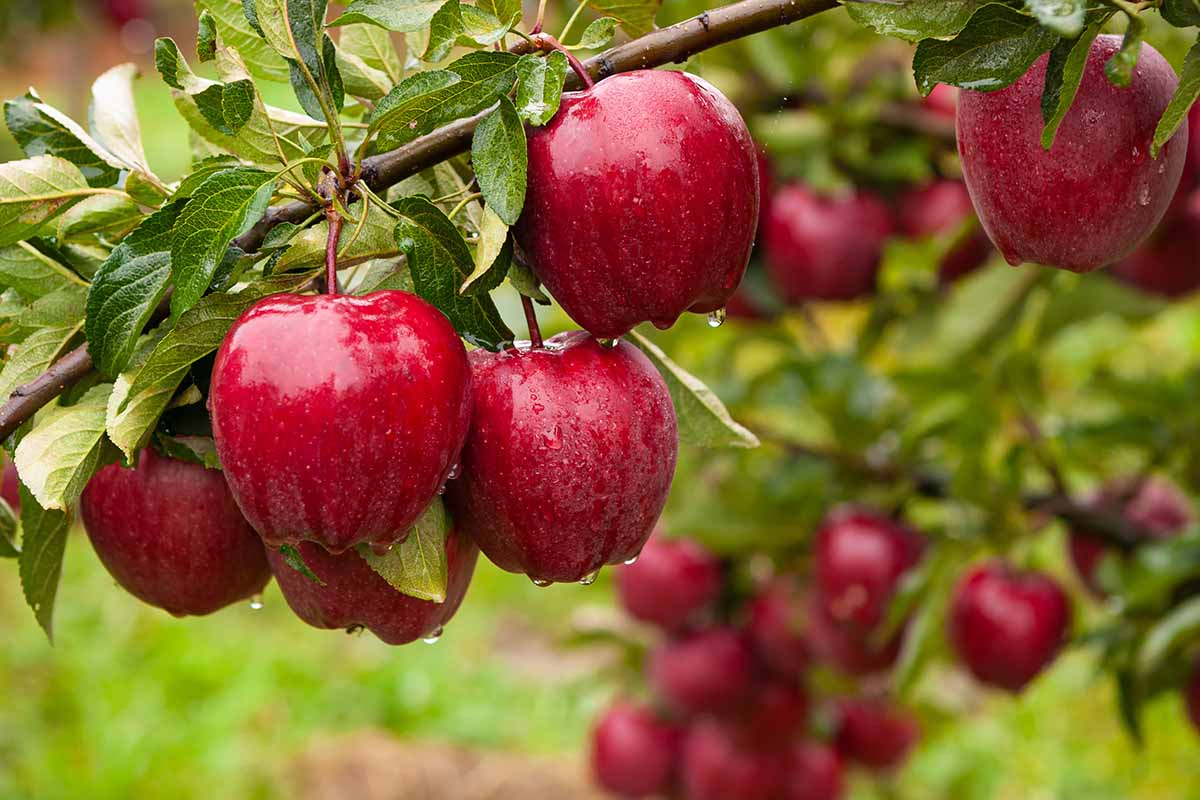
As they mature, fruits produce ethylene, a gaseous plant hormone that helps to stimulate the ripening process.
With this hormone comes an increase in softness, sugar content, ripened colors, and aromas, while also reducing acidity and pre-ripe hues.
Ethylene also stimulates the production of cellulase and polygalacturonase enzymes, which break down the cell walls in pome stems, allowing for their easy detachment from branches.
Ethylene is produced after harvest, too. Harvested pomes continue to soften and darken, their shelf-life is reduced, and the odds of infection via pathogens increase.
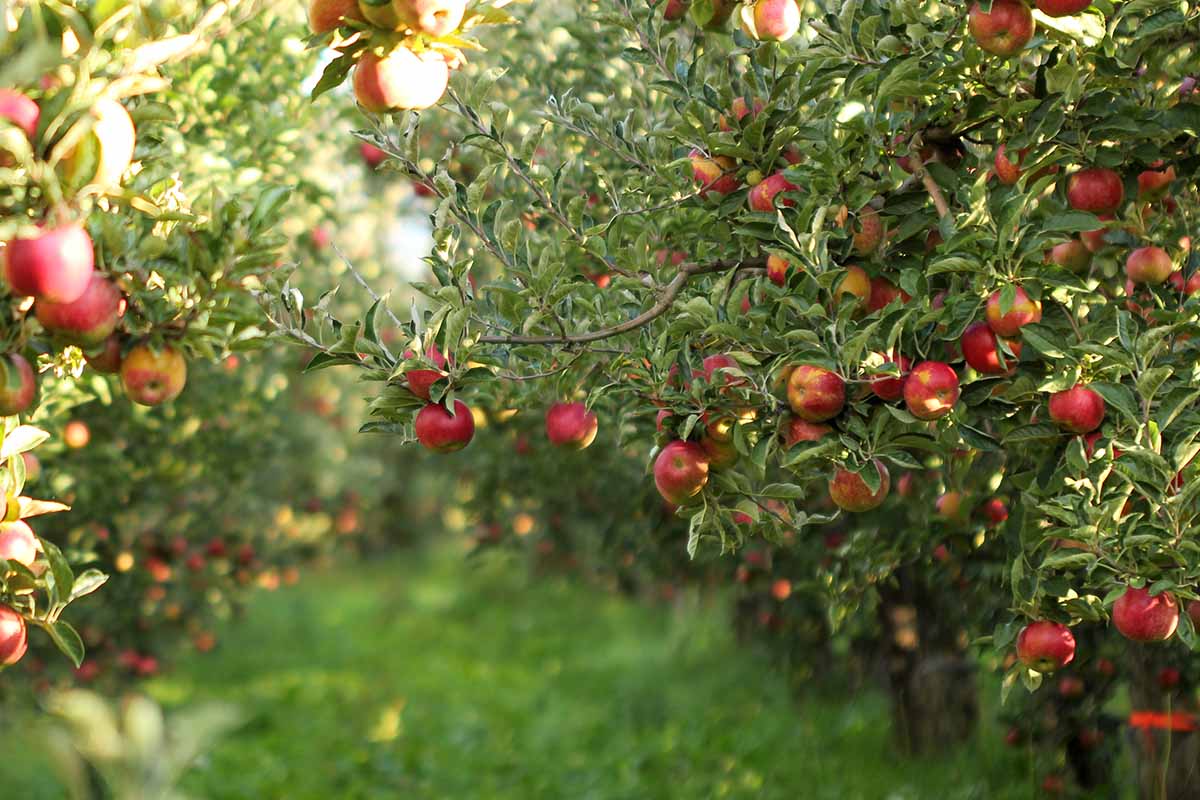
All of this occurs when things go according to plan, of course.
But in the case of premature apple drop, various factors can cause the fruits to leave their branches before their beloved qualities can fully come to fruition, pun intended.
This leaves you with less-than-desirable yields, regardless of what your intent for these yields may be.
If you primarily grow apples for your own fresh eating or for use in recipes, prematurely fallen yields won’t be as large, soft, aesthetically-colored, or tasty as mature and fully ripe ones would be.
For those who wish to sell their yields, whether commercially or at the amateur level, these reduced qualities leave vendors with less marketable produce overall.
So yeah, premature apple drop is no bueno. Let’s discuss some potential causes of it, shall we?
Causes of Premature Apple Drop
Premature apple drop can be a multifaceted issue… so here are a bunch of factors to consider in your diagnosis.
A heads up, though: more than one of these issues can simultaneously cause the problem, with each additional factor increasing drop severity. So you may have more than one metaphorical dragon to slay.
First and foremost, a stressed tree is more likely to release its fruits than a non-stressed one. Therefore, it pays to cultivate your Malus specimens properly.
If you need a refresher, feel free to have a look at our apple tree growing guide.
1. Apple Variety
All else kept equal, some varieties of apple are more naturally inclined than others to drop their fruit prematurely.
For example, ‘Honeycrisp,’ ‘McIntosh,’ and ‘Red Delicious’ varieties are less prone to premature drop, while ‘Gala,’ ‘Fuji,’ and ‘Jonathan’ are more prone.
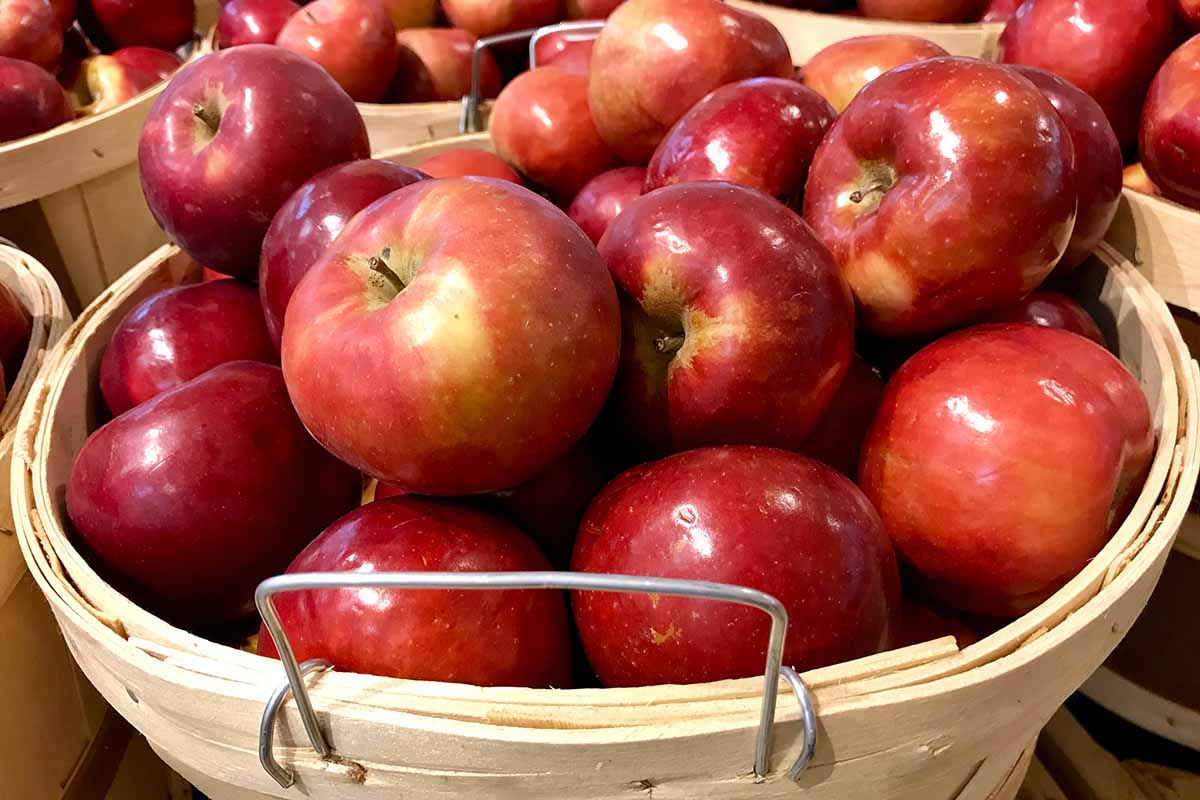
Whether you’re evaluating the specimens in your current orchard or choosing varieties for a future one, you’ll need to weigh the pros and cons of different cultivars and do your research.
Is a variety’s taste worth its propensity towards premature drop? It’s a question that only you can answer, and your answer may dictate your choice of cultivar.
2. Excess Fruit Load
Technically, not all fruit drop is bad. In some cases, it’s a natural part of the ripening process, also known as “June drop.”
After pollination, the flowers give way to fruits, usually quite a lot of them. In most cases, the tree sets more than it can metabolically sustain long-term. The plant simply cannot provide enough energy to support each pome’s development to reach its potential full size.
As a result, the plant ends up promptly shedding some fruitlets. This usually begins in June – hence the name “June drop” – but depending on location and variety, it can start as early as May or as late as July.
Sometimes, you may have to thin additional fruits after the June drop ends, to encourage ample fruit size and quality.
Thin out fruits until there’s one pome spaced every four to nine inches along branches, allowing more distance for larger fruits and less distance for moderately-sized ones. Use hand pruners, long scissors, or do so by hand.
Sometimes this phenomenon can be excessive or it may start earlier than usual, which is often indicative of poor pollination or periods of cloudy weather that have reduced photosynthesis.
Overall, maintaining proper cultivation is the best preventative measure to avoid extreme June drop. In the specific case of reduced photosynthesis, you could try to add some more sun to the equation by pruning the canopy to increase light penetration.
3. Heavy Pruning
Don’t go too crazy with the pruning, though. That could cause some premature apple drop of its own.
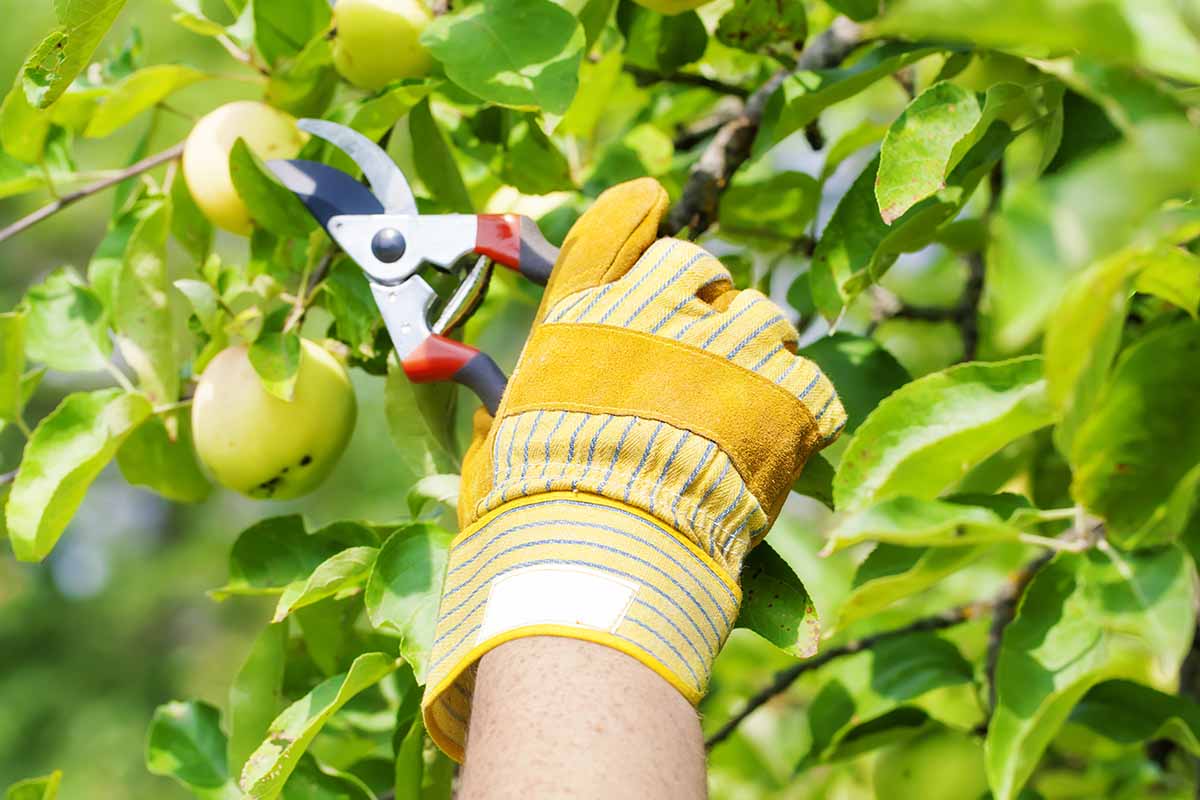
When you prune away a ton of leaves, there goes the foliage for adequate photosynthesis, which forces the tree to jettison some excess pomes that it won’t be able to provide the necessary carbohydrates for.
So, how much pruning is too much? Well, if the leaf-to-fruit ratio is below 20:1, you may run into some issues.
But don’t feel like you have to count every leaf and pome! An approximation is fine.
4. Herbicide Damage
The indirect application of herbicides to an apple tree can act as a physiological stressor for the plant, which can lead to premature apple drop.
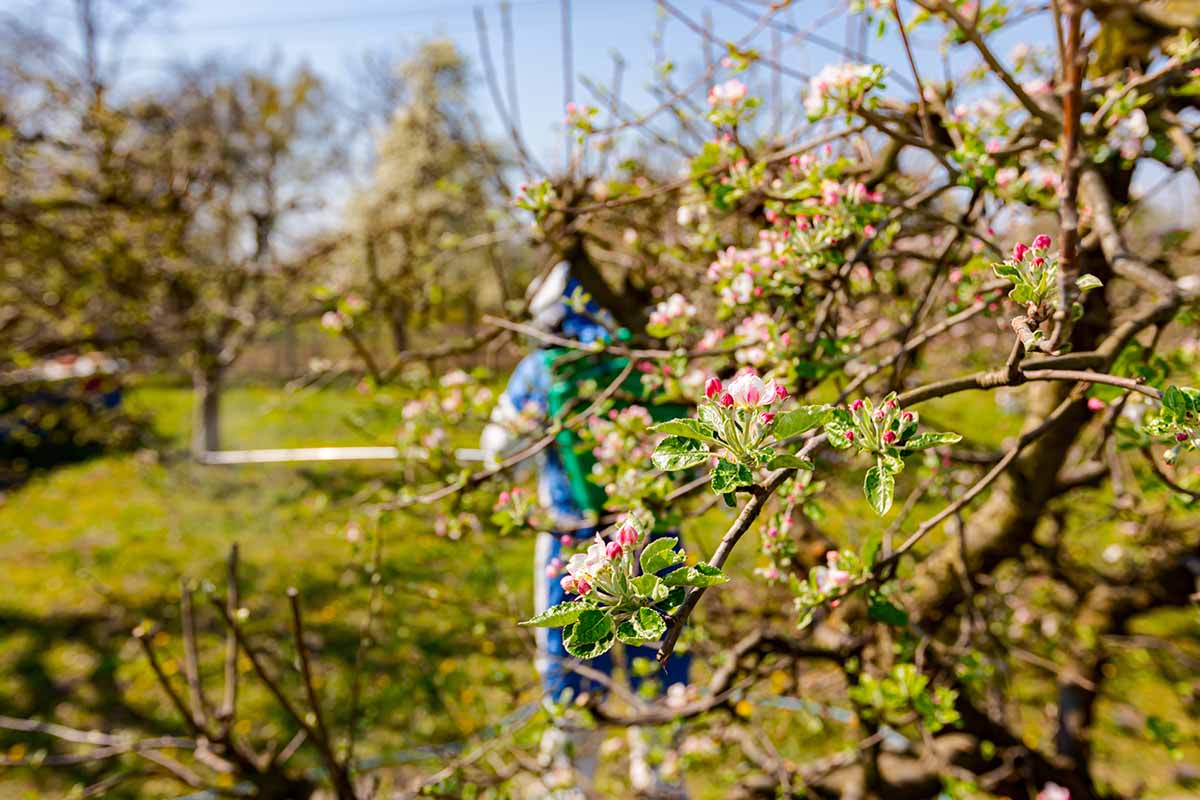
I mean, if I was holding a bag of Granny Smiths in line at the grocery store and someone sprayed a bunch of glyphosate on me, I’d definitely drop them before reaching the register.
When using herbicide sprays, it’s essential to control where your herbicide ends up. Don’t directly spray non-weeds with herbicides.
And be mindful of excessive herbicide usage on weeds, as it can easily drift via wind to undesirable places.
5. Hot and Freezing Temperatures
Early warm temperatures or extreme heat can stimulate ethylene production, which reduces growth during this stressful time.
But with this reduced growth comes increased ripening, which can trigger fruit drop prematurely.
Even warm nights can trigger significant cellular respiration in fruits, potentially lowering carb levels enough to warrant their early ejection.
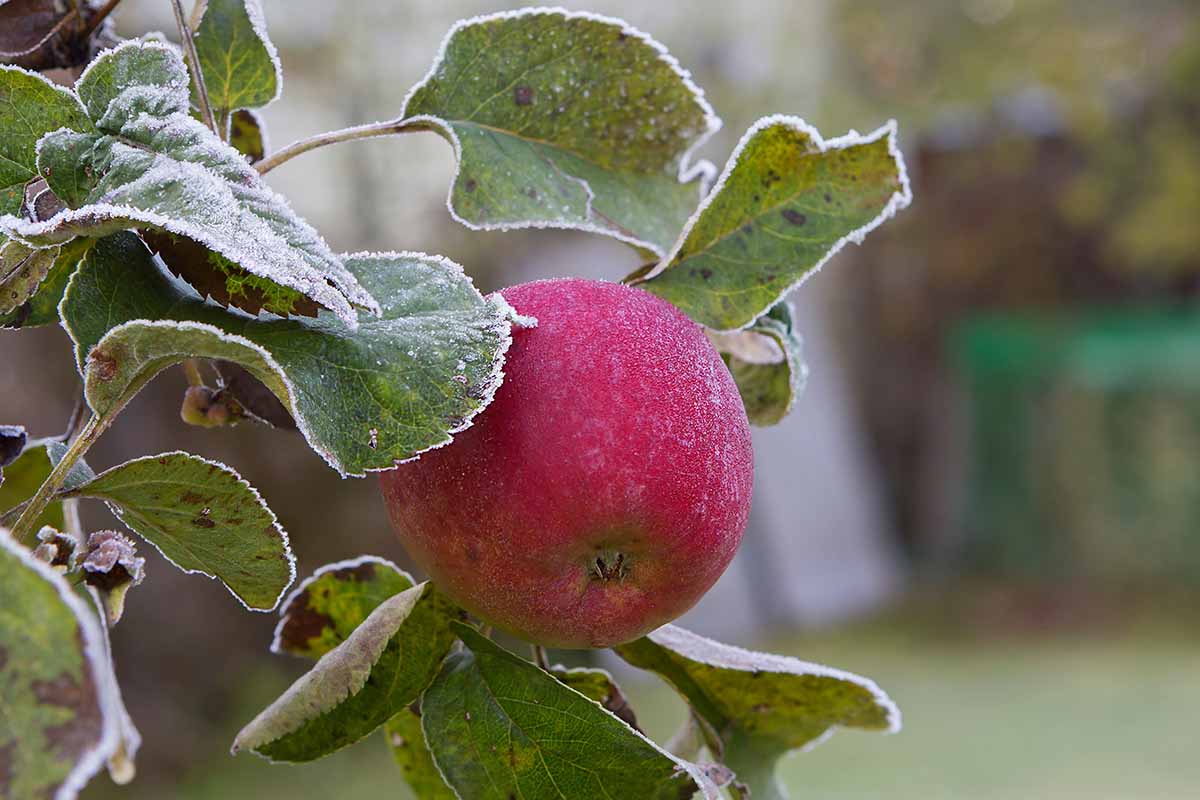
Freezing temperatures, especially right before flowering buds are set, can also stress a tree enough to interfere with development.
This may force an early release of fruits later in the season.
There’s not much you can do about the temperature, but it’s worth keeping this risk factor in mind!
Definitely a good reminder to double-check your local USDA Hardiness Zones when planning out your orchard, that’s for sure.
If you’re located at the edge of what’s acceptable, seek out heat- or frost-tolerant varieties.
6. Low Water
Often going hand in hand with high temperatures, a water deficiency is yet another stressor that can cause an apple tree to let go of its fruits early.
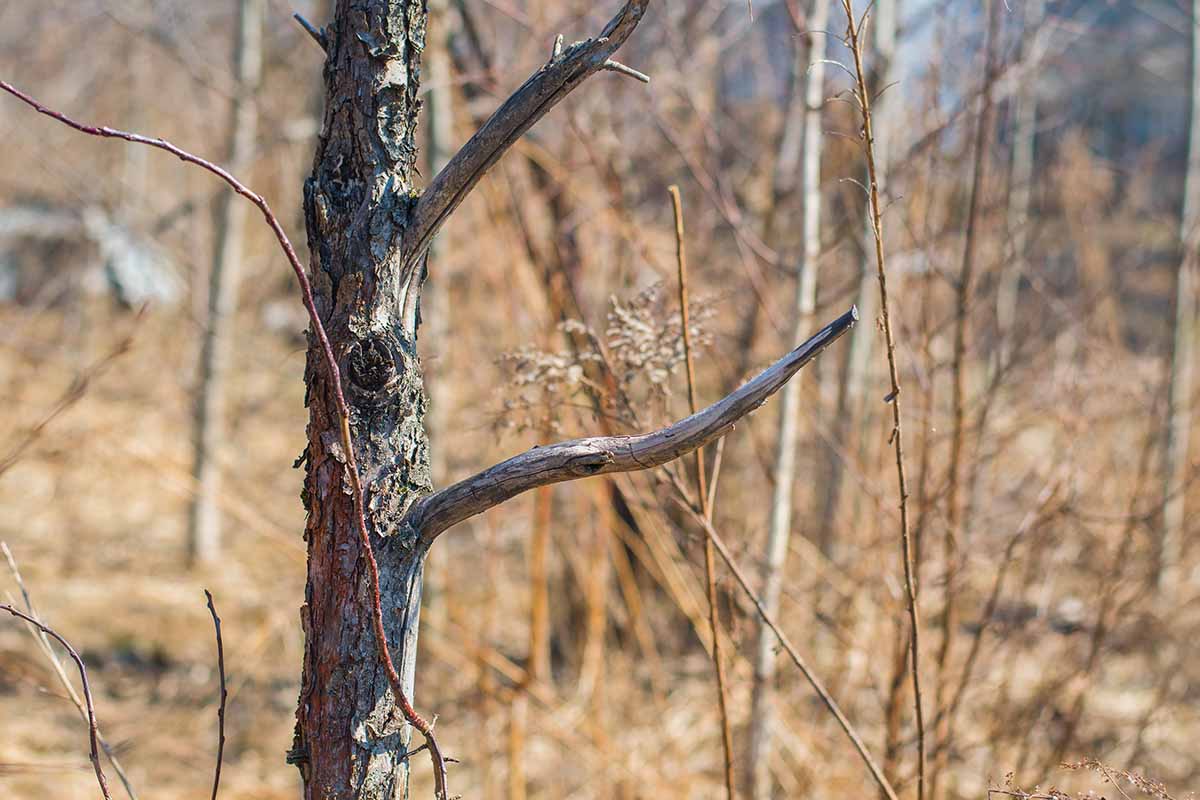
Ensuring enough water is available for a plant in times of drought stress is twofold: irrigation and moisture retention are factors here.
You’ve gotta actually add enough water, and make sure that it doesn’t evaporate too quickly via a nice layer of mulch around the root zone.
Find more tips on watering apple trees here.
7. Pests and Diseases
Along with feeding on your pomes, which can cause them to fall – not to mention leaving infested fruits looking grossly inedible – pests may feed from and damage the tree’s leaves.
This reduces photosynthesis to levels below what’s necessary for powering a pome’s growth and development.
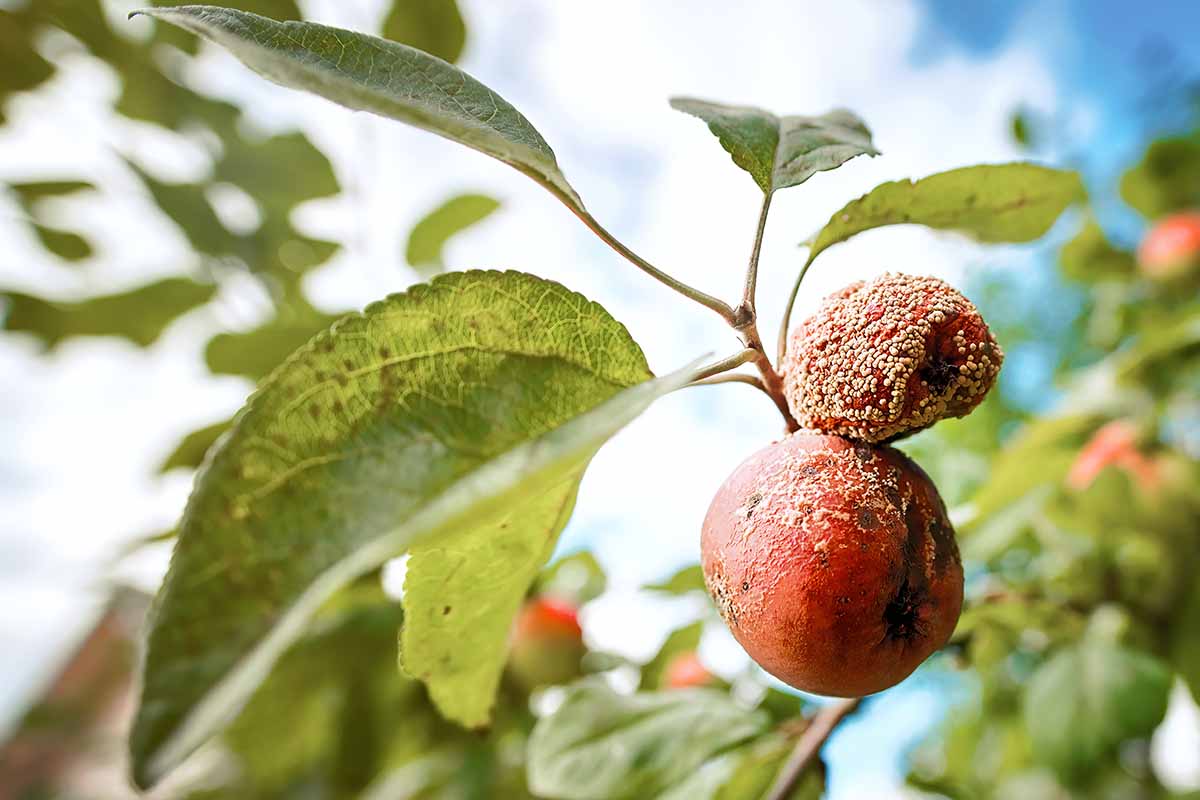
Diseases can cause similar issues, as they can be major health stressors that can force the tree to focus on survival at the expense of reproduction.
Therefore, it’s essential to try and prevent pests and diseases in Malus trees, and learn how to manage them if they strike.
For some pointers, check out our guides on apple pests and apple diseases!
8. Poor Pollination
If June drop is occurring earlier than usual, poor pollination may be the culprit.
Most Malus varieties can’t pollinate themselves without the help of another variety that flowers at a similar time.
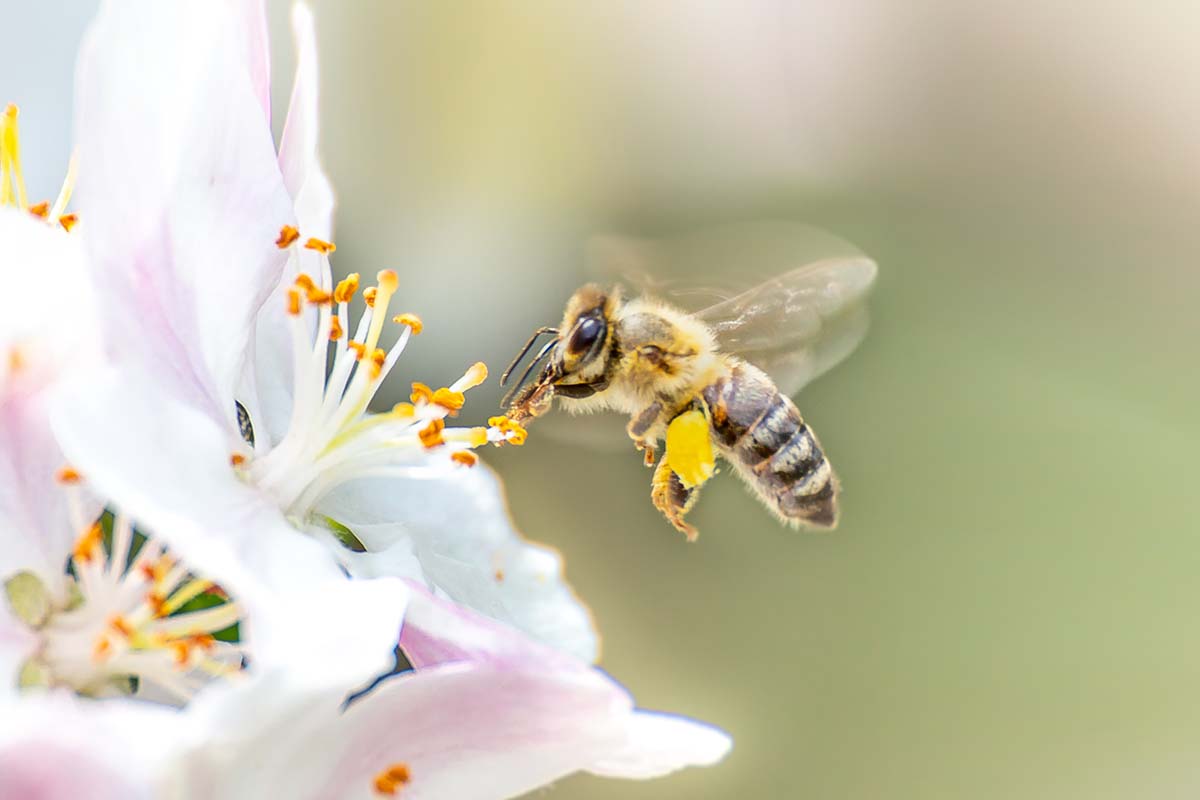
To increase the pollination rates of your trees, you’ll need at least one variety in the same flowering group as the ones growing in your orchard… for the most part.
There are select varieties that actually self-pollinate, while “triploid” cultivars actually need two other types of trees nearby to bear fruit, believe it or not.
In a pinch, you can even use non-Malus species of pome fruit trees to pollinate your apple specimens in some cases, such as pears.
Regardless of what you decide to grow for cross-pollination, you should space your specimens no more than 50 feet away from each other.
Learn more about apple tree pollination here.
9. Severe Wind
In the event of harsh winds, sometimes your pomes can be knocked from the branches before they’re supposed to fall.
Or said winds can cause branches to sway, which ends up throwing the attached fruits off. Either way, the winds are to blame.
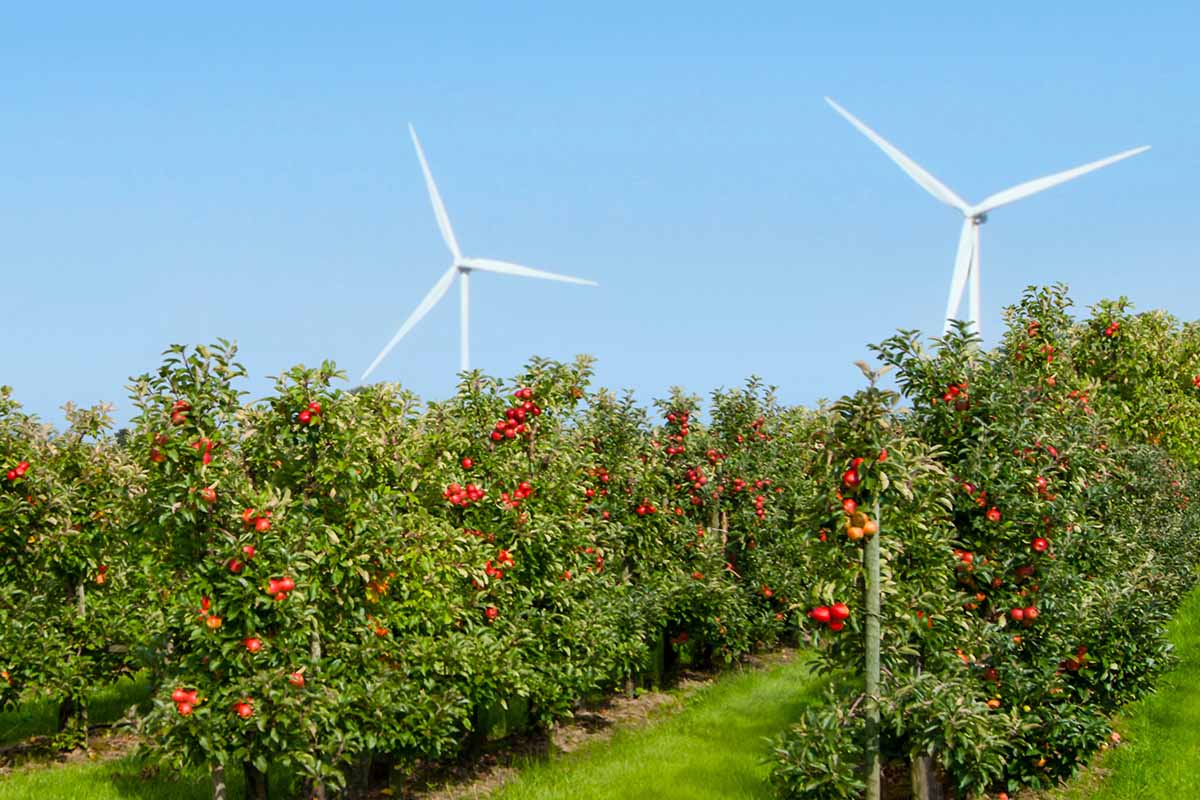
Proper placement of your trees can help mitigate wind damage. A tall line of burlap or a wall of densely-packed conifers such as arborvitae can be wonderful windbreaks.
Man-made structures such as barns, sheds, or even your home can shield your plants from wind as well.
Since they’re particularly at risk, juvenile specimens could often do with some staking.
Draping with wind covers such as tarps or frost cloths is better suited for older trees, as the covers may act as wind sails for the weaker-rooted younger ones that could potentially rip them out of the ground.
Additionally, a bit of pruning – without being excessive – can reduce the canopy’s surface area so high winds have less to batter around.
10. Soil Nutrition
“An apple a day keeps the doctor away,” as they say.
But these fruits can’t become nutritional powerhouses for us without receiving proper nourishment in their infancy themselves. And for plants, nutrients are primarily acquired from the soil.
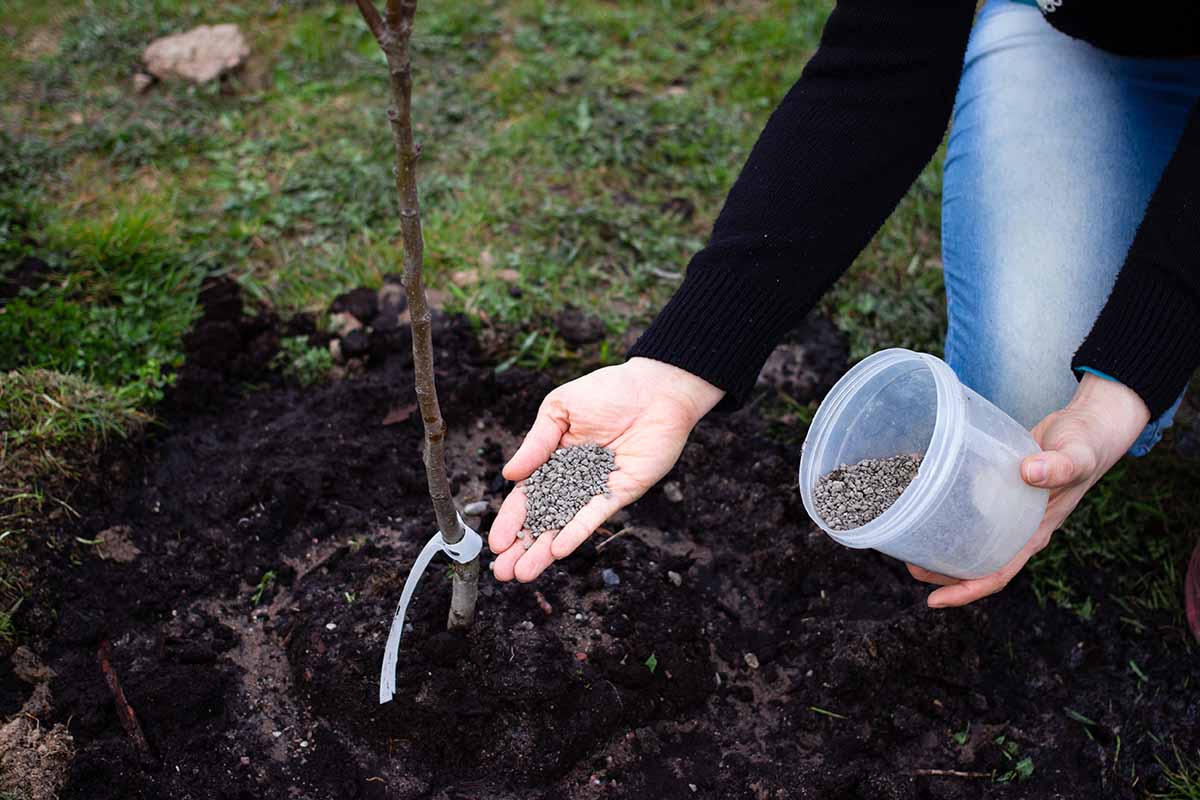
When the soil’s nutritional content isn’t what it’s supposed to be, an apple tree may release many of its fruits prior to harvest.
Insufficient organic matter and low levels of magnesium are two of the most well-known offenders in Malus trees, while nutritional excesses, such as high potassium and high boron levels, can lead to premature drop as well.
An intelligently-designed and well-structured fertilization program will ensure that your orchard is a well-tuned fruit-producing machine.
11. Soil Texture
Even soil texture, i.e. the soil’s composition of sand, silt, and clay, can make a difference in ripening times.
The fruits of trees planted in coarsely-textured, sandy soils tend to ripen and potentially drop earlier than those of specimens planted in heavier, more clayey soils.
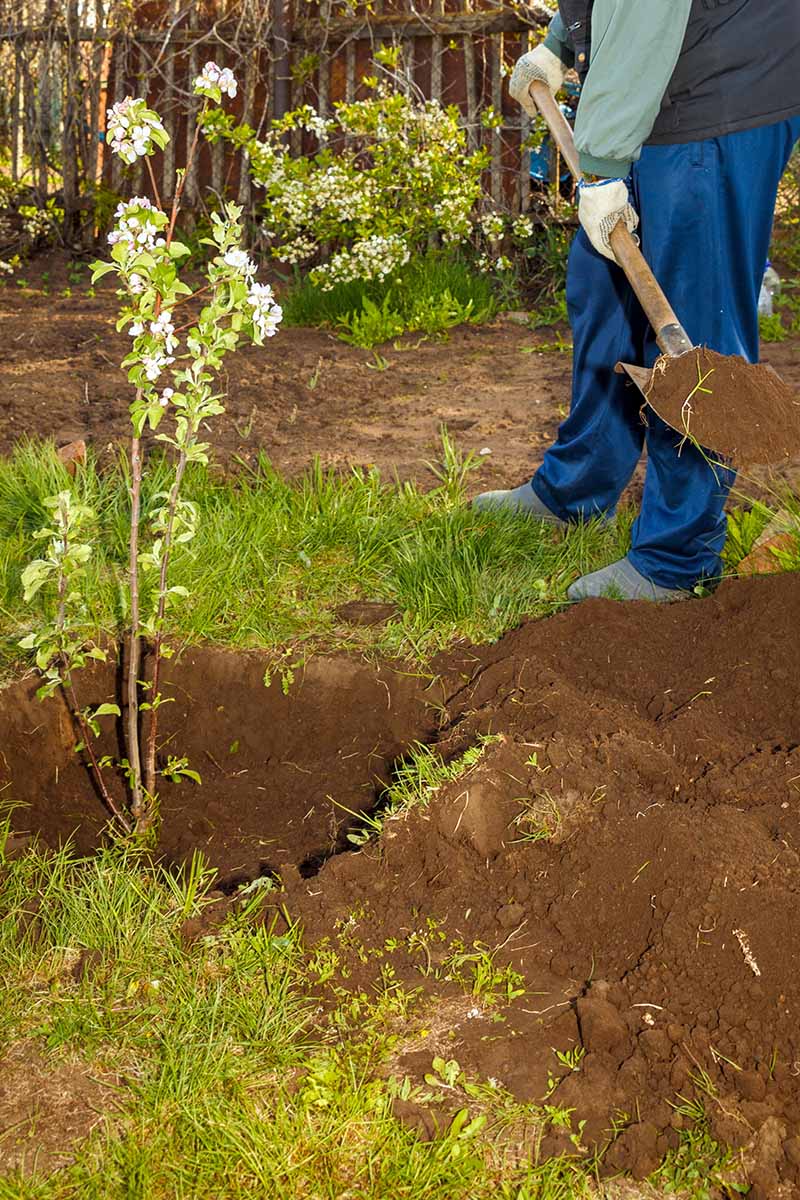
Early doesn’t always mean prematurely early, but for a tree that’s prone to early drop or dealing with some of the above factors already, the soil’s texture can make a significant difference.
Amending the soil around large roots is no easy feat, so it’s best to make the desired modifications to your orchard’s soil well before your trees are planted.
Put a Stop to the Drop
Nothing throws a wrench in your apple-eating plans quite like a lack of apples. Now that you know what can make them drop prematurely, the fates of your future fruits are more secure.
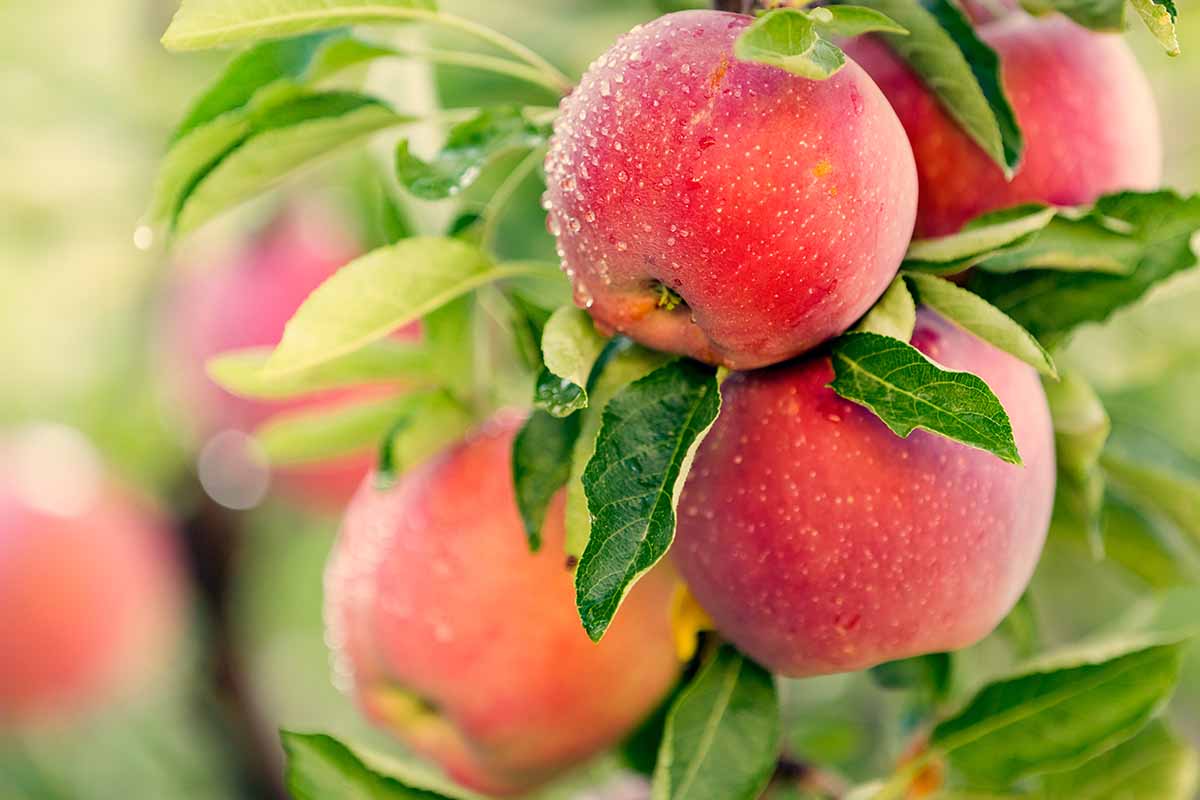
This guide is just a starting point, though. Once you have some ideas of what might be going on for you, don’t be afraid to reach out to fellow green thumbs for aid.
Orchard owners, extension agents, fellow backyard growers – all of them can be fantastic sources of wisdom!
Questions, insights, personal successes or failures to share? The comments section below awaits your input.
And for a handful additional guides to growing your own apples, here’s what we have in store:
Thank you for the level of detail here. During this growing season, I now think I paid too little attention to both nutrition and water. Sad to get mostly green apples, so I’ve made a note to avoid this next year.
You’re welcome, Jean! I’m glad you liked the guide!
Well this was a bad year for most Apple growers..they fell off hit the ground
I neaver seen it this bad in the bitterroot valley of apples …
Pears alike falling fast…I did get to harvest some good quality apples
For eatting…so not all was waisted. Neighbòrs goats and chickens
Plus the mule deer and white tails got all the ground apples i picked up
And gave to them outside the orchard..waiste not tight.!.
Sorry to hear about your less-than-awesome harvest, Joe… good thing you were able to harvest some apples and give others to the animals!
Good size honey crisp…
That is a nice one! Do you grow Pink Lady, as well? Those are my favorite!